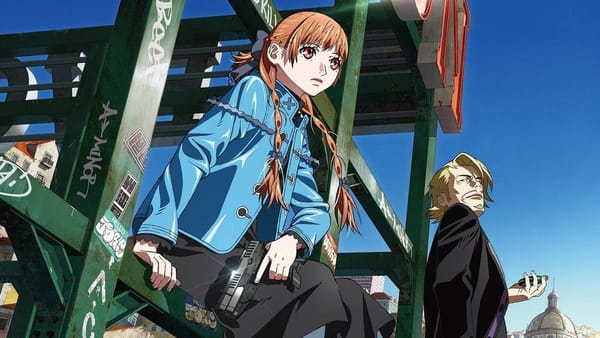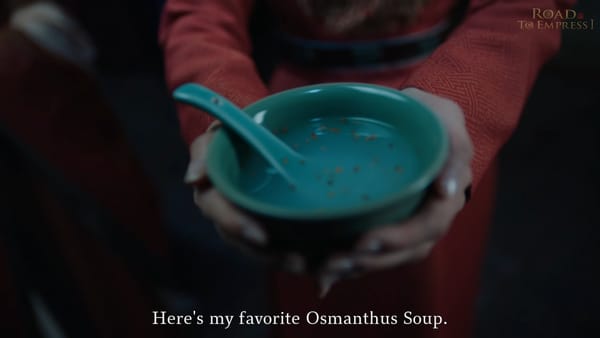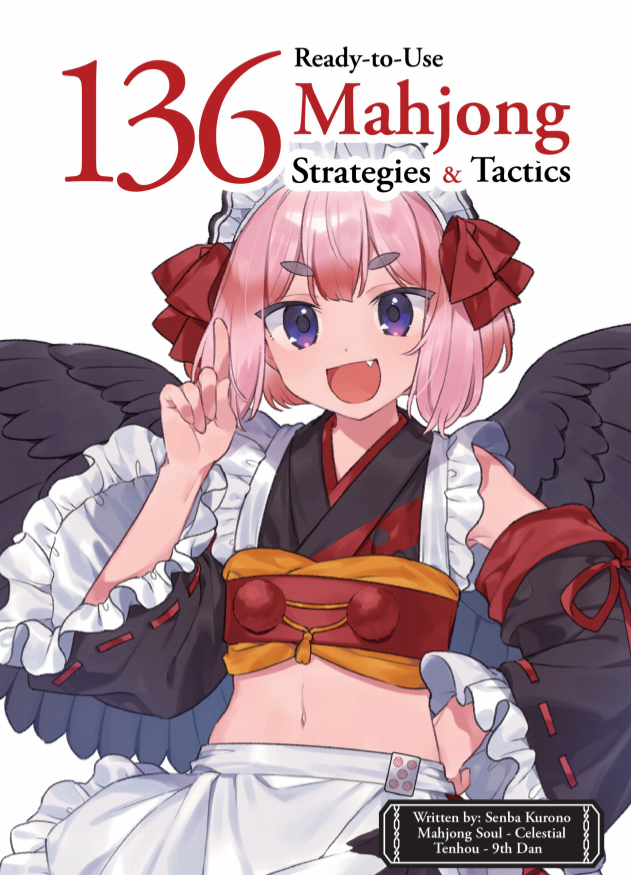The First Slam Dunk is a riveting masterclass in shonen manga storytelling from a master of the craft
Basketball is great! Let's play it together!
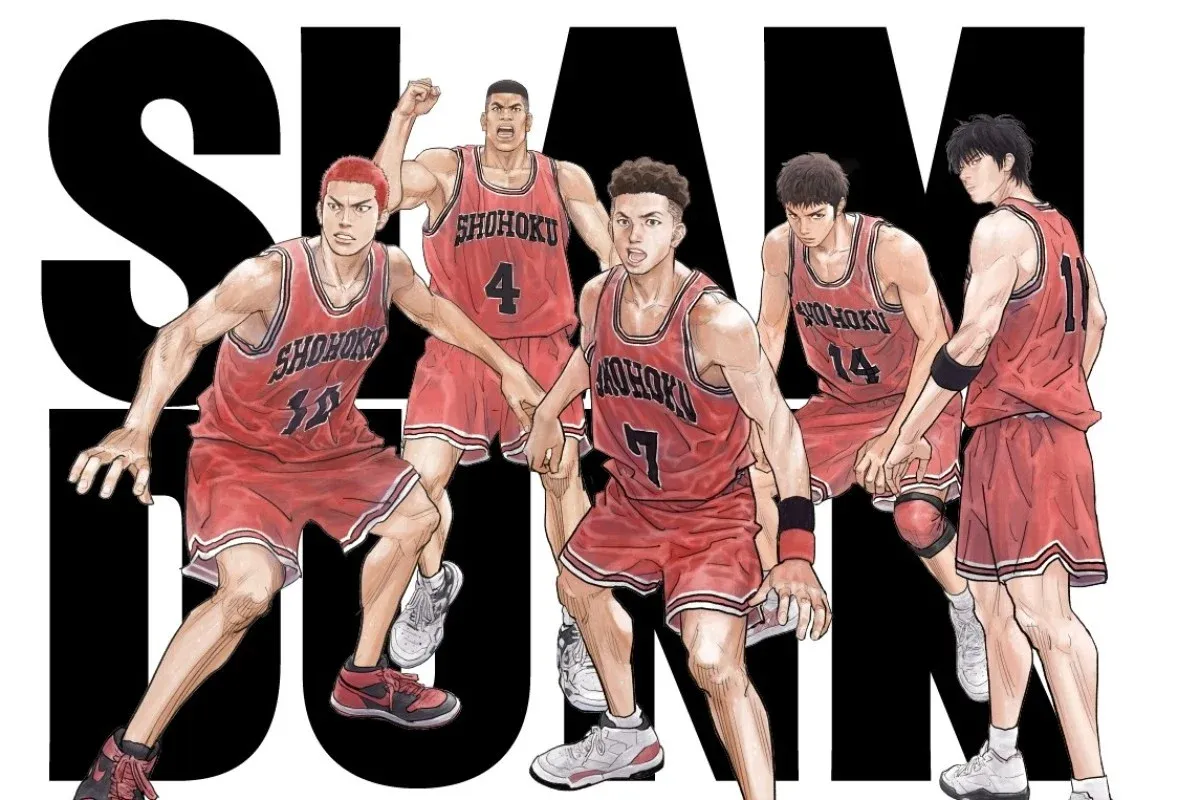
(Like with Suzume, screens are from a Youtube trailer; that’s the best you’re getting right now. The First Slam Dunk ran theatrically for about a week and I was lucky enough to see it in one of the last days.)
Why is shonen anime/manga-- and very often, the stuff produced under the Shonen Jump banner-- so much more popular than the rest? By orders of magnitude? If you ask me, Jump has the blueprint. They simply take new artistic talent and force them1 into the mold they already have on hand, the one that produces extremely addictive and passionate storytelling.
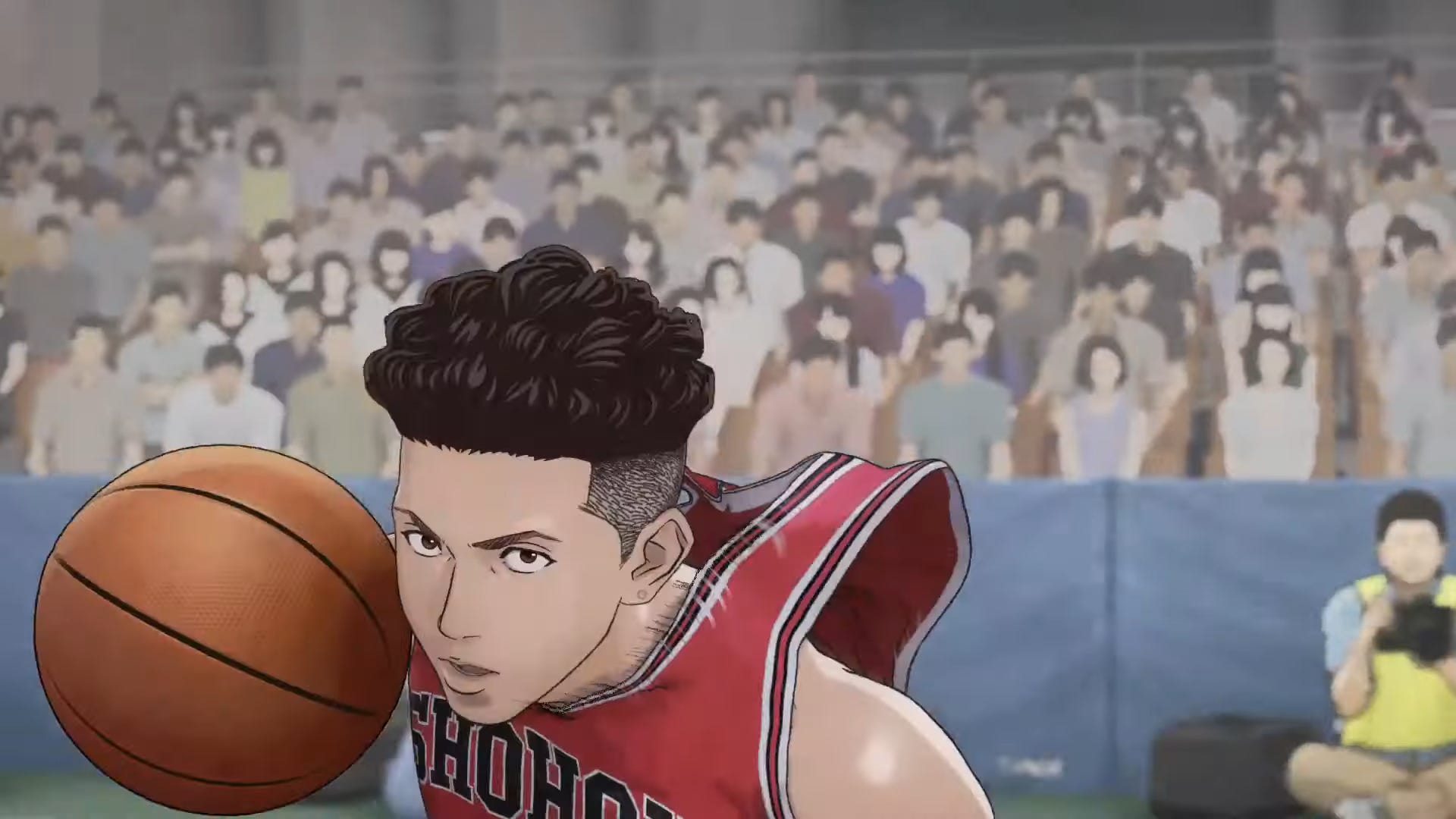
Constant action, dropping readers in the thick of it and keeping the breaks short: that’s the core. The average Dragon Ball fan is walking out if there isn’t either a fight or the promise of one in the very first chapter. Compelling characters and world-building to get people to care about the action: it’s the humanity, and the convincing reality of these worlds, that make people actually become obsessed with these stories. And last, the perpetual cliffhanger style: Every sixteen pages, something happens that makes the reader absolutely desperate to know what happens next. To Be Continued; repeat 100 times.
Contrary to its title, The First Slam Dunk takes the last fifty or so chapters of the classic sports manga Slam Dunk— the action, the flashbacks, the crises and the cliffhangers— and smashes them into two exhilarating, heart-pounding, cheer-at-the-screen hours.
A couple of things distinguish The First Slam Dunk from the average franchise anime revival movie: first, it’s mostly a CG movie, animated in a style that successfully mimics author Takehiko Inoue’s own photo-real artwork. It had better do that, because second, the film is actually written and directed by Inoue himself. Talk about a talent!
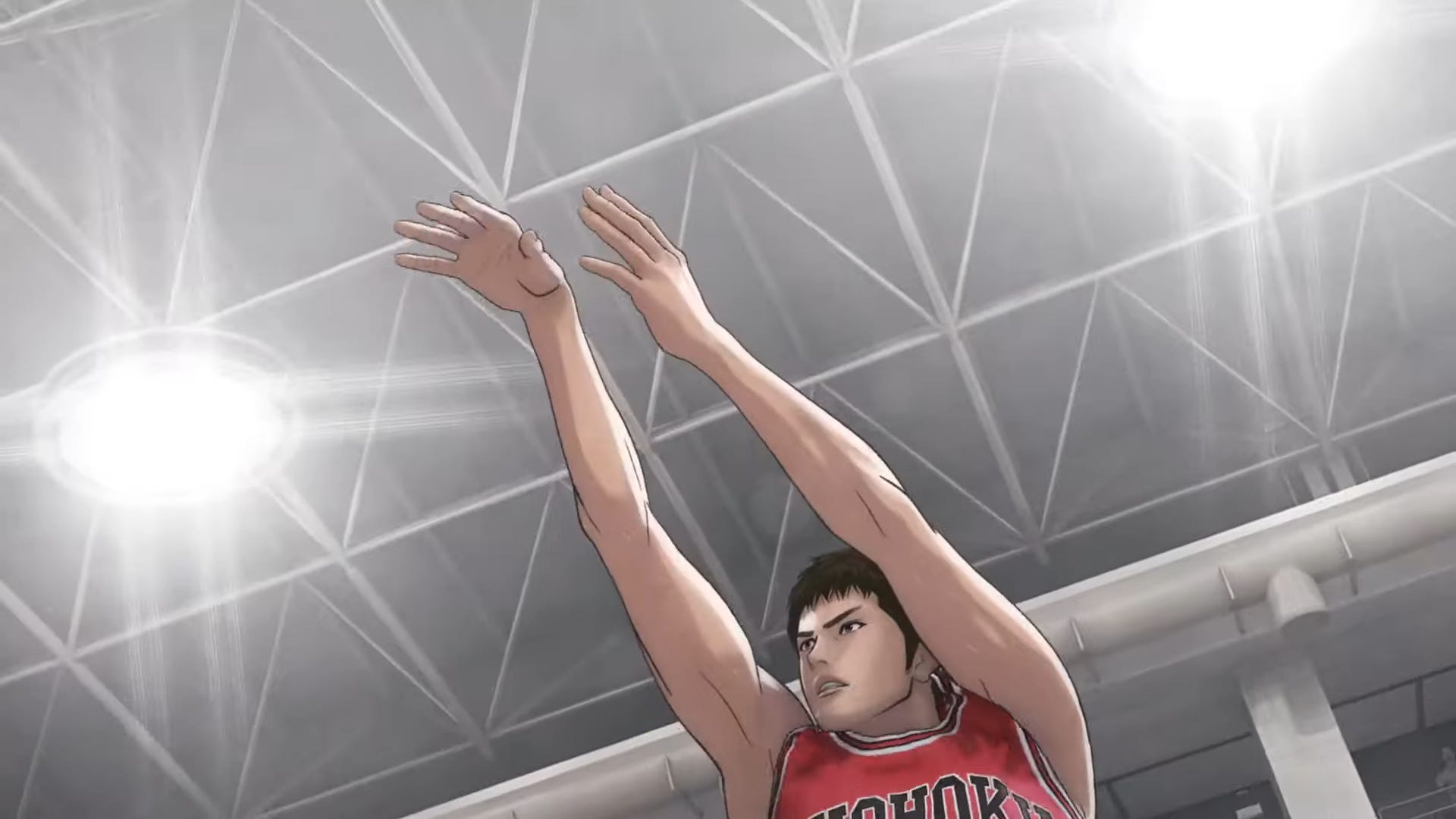
Full-CG anime has been “getting there” slowly, approximating the look and feel of 2D anime in the best productions. The First Slam Dunk isn’t really content being an “approximation”, but rather leads in with its own bold style. Every frame looks as though Inoue could have drawn it himself. The opening, in which the characters are literally drawn to life by pencil strokes as they take their first steps onto the court, is shocking and brilliant.
The movie is probably around 90% CG animation, slipping quietly into 2D during certain character moments or for a surprisingly intense fight scene. 90% of the film also takes place on the basketball court: the time frame of this movie, those aforementioned fifty chapters, is a single championship tournament game between our Shohoku High heroes and the elite Sannoh High.

The action on the court thus stretches across the entire film, and it is thrilling. There is a physical presence and weight to the animation that begs the viewer to love basketball the way this movie does: shoes squeaking and thudding on hard wood, sweat flying off clashing bodies, the swish of the net, a hand slamming the ball through the metal hoop. The up-close direction and intimately detailed animation place you on the court in a powerful way, and the energy is contagious.
And in between the action, there’s another classic shonen technique tying everything together behind the scenes: the flashback. Focusing on point guard Ryota Miyagi for its point of view rather than the manga/anime’s protagonist Hanamichi, the movie fills in the gaps of the players’ lives with stories from their pasts. Even those of us with little to no Slam Dunk knowledge2 get just enough material to help us understand what the game means to them. Ryota in particular grabs us with a tale— untold before this movie— of loss, family turmoil, and living under the weight of great expectations.
Without the flashbacks, The First Slam Dunk is just a movie about a basketball game. Inoue slips you little bites of off-court drama at just the right moments to flesh out players’ personalities, make us really care who wins this game, and thus, make us desperate to see what happens next on the court. It’s the breaks that make it so intense. This is perfect shonen formula, condensed to an explosive potency.
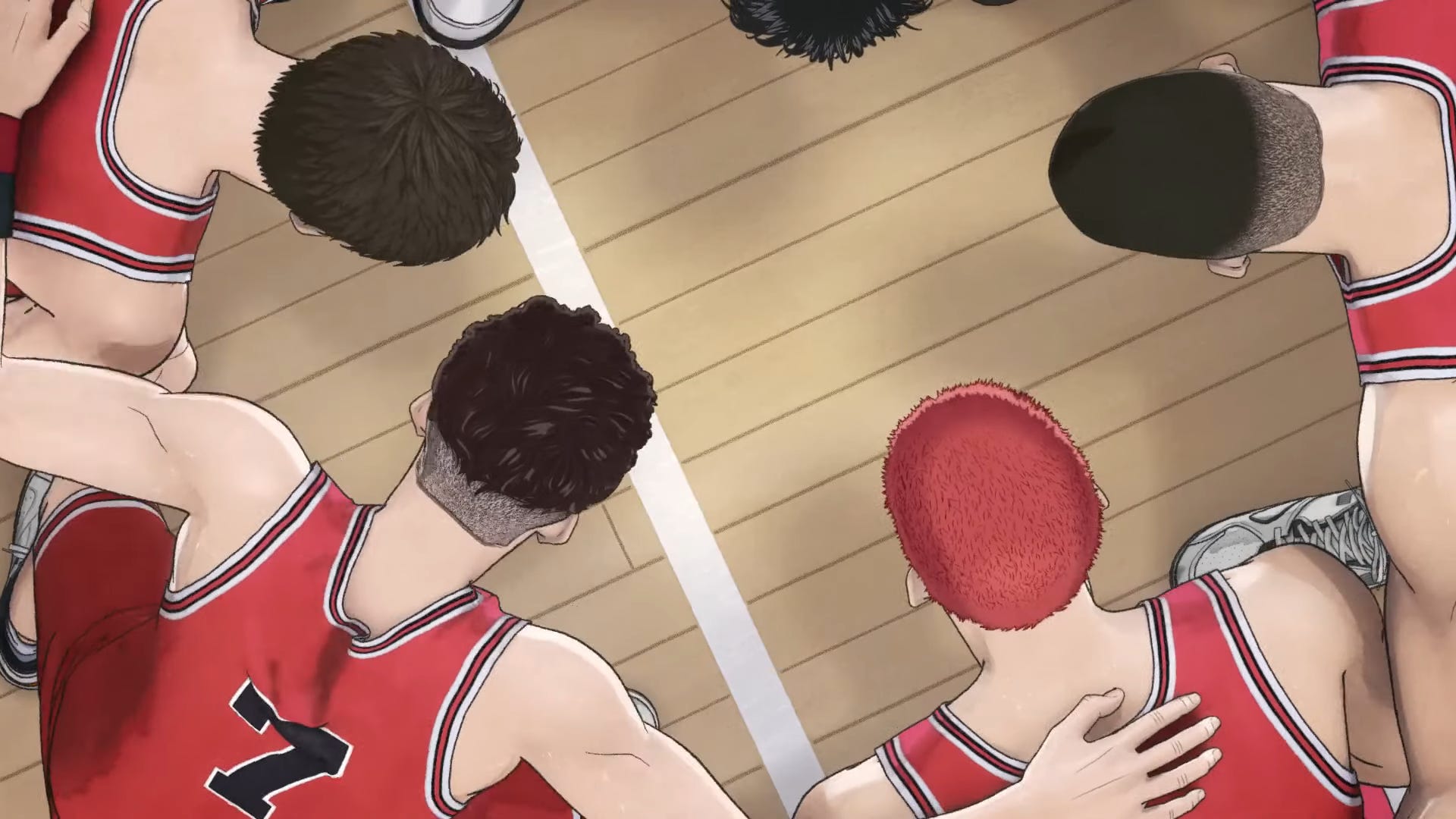
Getting to know the characters makes you notice their camaraderie: that these guys have grown to trust each other after struggle and conflict, and that it’s paid off in teamwork. The little details in the animation express their friendship beautifully. The payoffs in the big moments are ecstatic: I wanted to yell in the middle of the theater.
Speaking of, everybody in my sparsely attended theater was clearly very familiar with Slam Dunk, and I say that because there were so many knowing whispers and giggles at key points. As is generally the case with sports anime, the crowd was mostly women, and you bet I heard a bit of joy from the crowd when someone got slapped on the ass.3 I don’t think it’s really just a movie for existing devotees, though; anybody could watch this and have a great time.
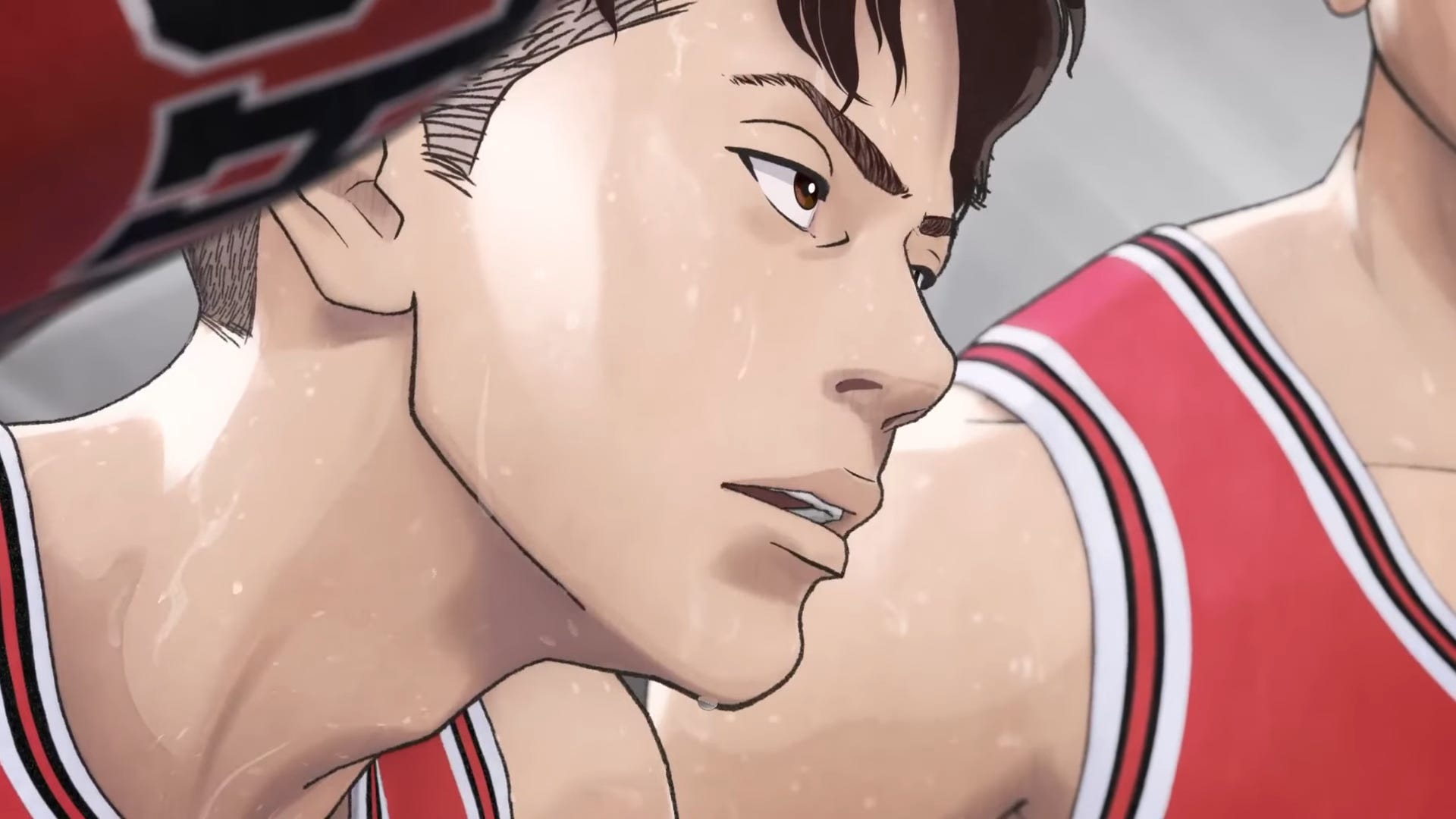
I was reminded of attempts to simply cut through a long-winded series quickly, like Dragon Ball Kai. But this is an altogether different thing from that: it’s a creator doing a director’s-cut remake of his own work, inside of a completely different medium. It speaks to Inoue’s prodigious talent that this unusual venture is so wildly successful. Maybe Hanamichi really is a genius.

